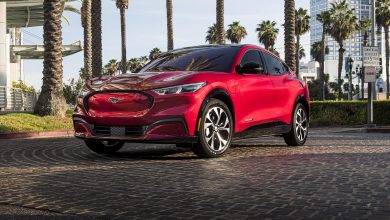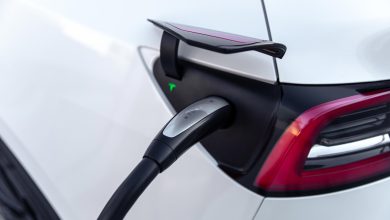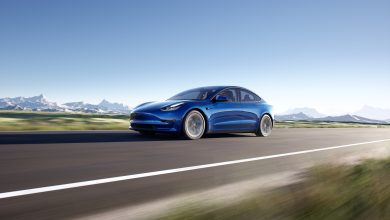EPA’s Proposed Emissions Cuts Will Boost EV Sales
EV NewsThe EPA is considering several different emissions proposals

On April 12, the United States Environmental Protection Agency (EPA) proposed emission cuts for new vehicles and trucks through 2032. The move could mean that two-thirds of vehicles sold in the next decade by automakers will be electric.
The announcement is considered the most ambitious auto pollution regulation in history. Its aim is to accelerate the transition to electric by automakers and lower greenhouse gas emissions. The agency said transportation is responsible for about 30% of all greenhouse gas emissions in the country.
If the proposal is finalized, it will achieve a 13% annual average slash in pollution and up to a 56% reduction in the estimated fleet average emissions above the 2026 requirements. The EPA said that the shift will lower oil imports, save motorists thousands of dollars in maintenance and fuel costs, reduce air pollution deaths, and slash the emission of greenhouse gas pollution that is fingered for global warming.
According to EPA projection, the 2027-2032 model year regulation will slash over 9 billion tons of CO2 emissions through 2055. This is equivalent to double the U.S. emissions in 2022. The hastiness with which the EPA is pushing the proposals has left environmentalists and automakers speculating that Biden’s administration wants to finalize the new regulations by early 2024 to make it more difficult for future presidents or Congress to upturn them.
Perhaps, this was inspired by the rolling back of Barack Obama’s tough emission limits set through 2025 by President Donald Trump. Obviously, President Biden wants to prevent a repeat of a similar scenario.
The EPA estimates that the benefits of the new policy through 2055 when finalized will range from $850 billion to $1.6 trillion. Also, the agency estimates that by 2032, the proposal will cost about $1,200 for each vehicle by each manufacturer but will on average save drivers over $9,000 on maintenance, fuel, and repair costs over an eight-year period.
The EPA is considering several different emissions proposals
Officials of the EPA said they are contemplating a myriad of varying emissions proposals that will boost the electric vehicle adoption rate by early next decade to as much as 64% to 69%. Speaking on CNN, EPA Administrator Michael Regan claimed the series of emissions proposals are beneficial to both automakers and consumers.
“This is a future for everyone, and we’re starting to see all of the auto industry move in this direction,” Regan said in a CNN interview with Sara Sidner.
The agency projects that the new regulations would see EVs make up about half of all new medium-duty vehicles including delivery trucks by 2032 model year. Officials of the agency are also proposing tougher standards for heavy-duty vehicles like dump trucks, school buses, and public utility trucks.
“It is a pretty big deal,” said Thomas Boylan, a former official of the Environmental Protection Agency and the regulatory director for the EV trade group Zero Emission Transportation Association. “This is really going to set the tone for the rest of the decade and into the 2030s in terms of the administration’s expectations for the auto industry when it comes to decarbonizing and ultimately electrifying.”
There are speculations that the Biden administration’s push to hasten the EV transition may backfire from the complicated China dominance of EV supplies, unwilling consumers, and GOP governors who oppose the phasing out of internal combustion engines. Also, the administration may see rising opposition from the oil industry.
EPA did not set a date for ending the sale of new gasoline-powered vehicles
What the Biden administration is not going to do is to outrightly ban gasoline-powered vehicles. Regan also declined to back setting a date to put an end to the sale of new gasoline-powered vehicles. According to Regan, the proposal is not an EV mandate.
“We are not driving any particular technology out of business—so to speak,” Regan said.
The United Auto Workers union has previously warned about the consequences of switching from gasoline to EVs including job losses. The union said it will review the EPA’s proposal.
“There is no good reason why EV manufacturing can’t be the gateway to the middle class that auto jobs have been for generations of union autoworkers,” said the UAW. “But the early signs of this industry are worrying. Forcing workers to decide between good jobs and green jobs is a false choice.”
Last August, California pushed for a regulation that will mandate all new vehicles sold in the state by 2035 to be either plug-in hybrid or all-electric. However, they still need an EPA waiver to proceed. Regan declined to comment on how the EPA would react to such a request from California.
“We’ll be on the lookout for that if it were to ever come,” he said.
Reactions to the EPA proposals are largely divided with the Republican Senator Shelley Moore Capito saying the Biden administration was “deciding for Americans what kinds of cars and trucks we are allowed to drive, lease, and buy”.
On the other hand, environmental activists think the proposals are not tough enough. Dan Becker, director of the Safe Climate Transport Campaign said, “Automakers talk out of both sides of their tailpipes, promising EVs while delivering mostly the same old gas-guzzlers and lobbying for weak, loophole-riddled rules.”
Supporters of President Biden’s climate policies have genuine concerns
On the positive side, automakers have expressed willingness to make the switch to EVs. This is evident in the amount of money they have invested in facilities to promote the cause. Some of them have even defended previous EPA pollution regulations in federal court.
“Whether you measure [EPA’s] announcement by the dollars saved or the gallons reduced or the pollution that will no longer be pumped into the air, this is a win for the American people,” said Ali Zaidi, White House National Climate Advisor.
However, even those who support the president’s climate policies are worried about a lot of issues including the ability of most consumers to afford the over $50,000 price tag of many EVs currently on the market. Although Biden’s climate law offered $7,500 tax breaks to curb the shock of switching to electric, the Treasury Department recently announced rules that will make it harder to get the tax credits.
“Everybody cares about global warming,” said Rep. Debbie Dingell. “I’m hearing from too many people in this country—I mean, strong Democrats—that they can’t afford an EV.”
Other issues that may hinder motorists from making the switch to electric vehicles include inadequate charging stations as well as the questions regarding whether newer EV models will be made in the United States with locally sourced parts or whether the dependency on China will continue.
According to John Bozzella, president and CEO of the Alliance for Automotive Innovation, “A lot has to go right for this massive—and unprecedented—change in the automotive market and industrial base to succeed”.
Related
Biden Unveils Investments for Affordable EVs
Biden And EU Leader In Talks That Could Expand EVs That Qualify For U.S. Tax Credits




